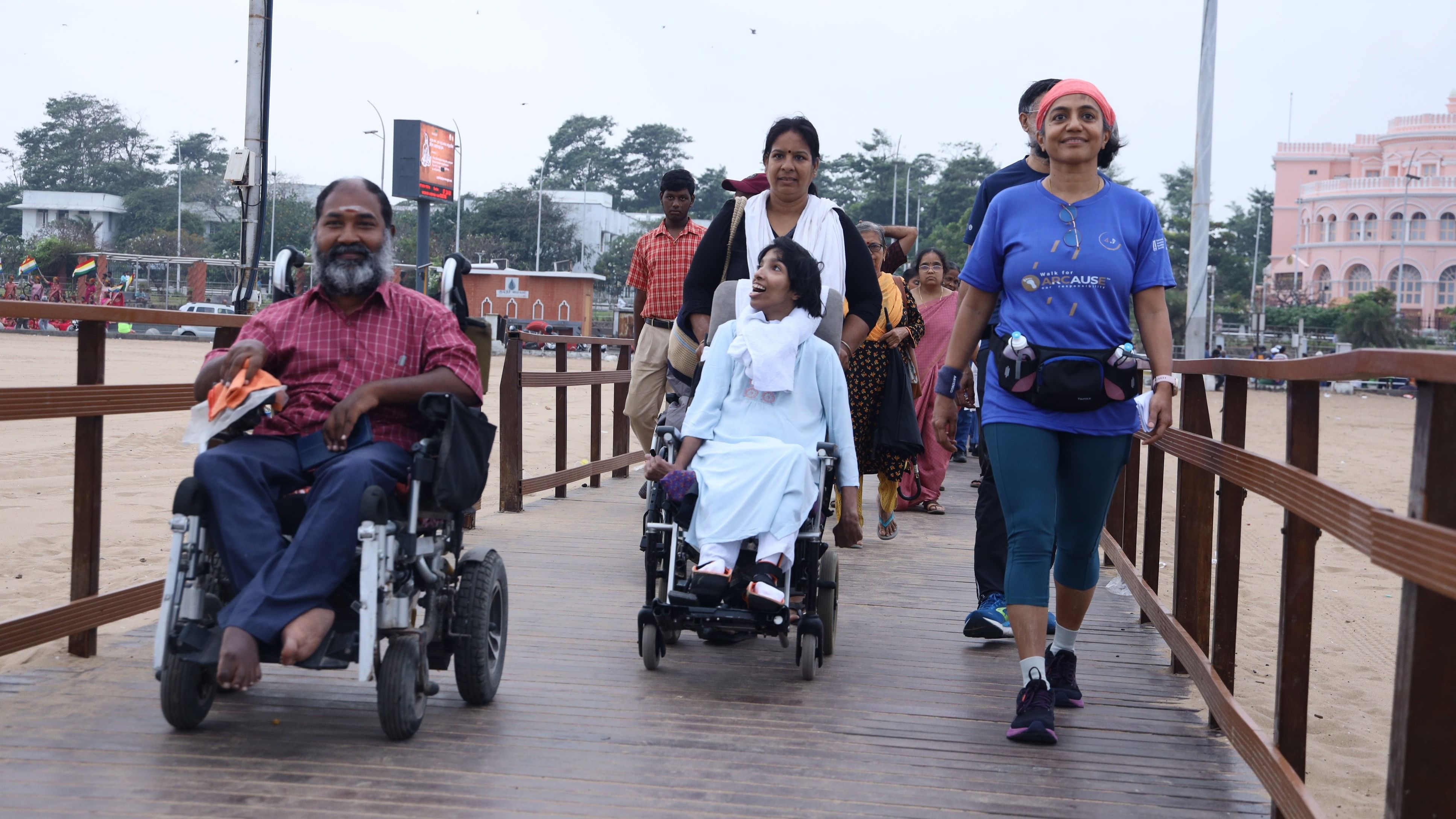
I was walking through Bishnupur in West Bengal. I stopped at an eco-resort and met Anjali there. Her words still ring in my ears. She said her mud home exudes cool comfort yet if she has the funds to build another, she will opt for newer materials. It is the trend, she reasoned. Many such quandaries surfaced during ‘1700’, my 1,700-km walk from Kolkata to Delhi in 2022. It made me question the elitist path that the design industry and designers at large are currently treading.
Anjali and others like Rajua in Umari and Ram Singh Yadav in Alipura, both in Madhya Pradesh, want to move away from traditional ways of building because of their quest for permanence. This calls for architects to demonstrate how people like Anjali can embrace new aesthetics without giving up the old character.
If we want our local contexts and identities to survive, a conscious effort is needed to delink the tag of kaccha from materials like thatch, mud, cob wall, wattle and daub. Government intervention is required because one can’t avail of loans and grants to construct homes with kaccha materials.
Affecting communities
As I walked through villages and small towns of West Bengal and Jharkhand, I noticed the roads lined closely with homes. I saw this between Kolkata and Dhaka in Bangladesh too. People sat in their verandahs and talked to families across the road. Such proximity and visual connection foster a community feeling.
As I crossed the borders of Madhya Pradesh and Uttar Pradesh, I noticed a change in the builtscape. Homes were larger both horizontally and vertically. Infrastructure was better — expressways cutting across villages, towns and cities. However, these expressways reduced the sense of community. People who connected across the road no longer could, and homes sported high compound walls. Conversations lessened or ceased in certain sections. This is true of our cities too.
In traditional Indian architecture, homes along roads often feature elements like chabutras (raised platforms) and verandahs, fostering social interaction. However, the modern trend of building homes right up to the edge of the road and with high compound walls isolate residents, hindering community cohesion.
The Aranya Low-Cost Housing Project in Indore is a model example. It prioritises community spaces and greenery, fostering a sense of community while ensuring privacy. This high-density, low-rise housing solution was designed by Pritzker award-winning architect B V Doshi.
Flawed expressways
My third walk was in September 2023 in Odisha. I walked from Konark to Bhubaneswar via Puri along with architecture students. They interacted with different communities along the route.
A design student uncovered why Pipli, a traditional applique craft from the Pipli town, is on a decline. Its popularity started fading away since a highway was designed to bypass the town. Travellers passing through the region could no longer stop by the town and be exposed to the craftwork.
I encountered several stories of how highways are designed without considering the local way of life. Pedestrians who needed to navigate such highways to get to schools, fields and workplaces or to graze cattle were not factored in. Most new expressways have no trees lining them and there are hardly any resting places for a weary traveller on foot.
Lack of toilets
Public conveniences on the road were often far and few between. Petrol bunks were a saving grace. However, there were days when I had to request locals to let me use toilets at their homes.
Many of the toilets I used were makeshift structures enclosed with cloth or tarpaulin. Locals still head to the fields. Since water is precious, they prefer expending just a lota (small rounded vessel) of water instead of buckets, which are required to maintain toilets.
Community toilets are vital for public health and dignity, serving residents and visitors alike. Designs like Rohan Chavan’s Light Box in Mumbai ensure cleanliness and privacy. Chavan has built a public restroom from an old shipping container under a tree canopy. It features a nursing room, a toilet for persons with disabilities and senior citizens, and a socialising space for women.
I noticed that the surroundings of bus stops often reeked of a foul smell. A good intervention will be to set up toilets near bus stops where passengers alight.
It is crucial to explore sustainable and culturally appropriate options while designing toilet solutions. Ecosan (Ecological Sanitation) toilets are one option. It is designed to recycle human waste into fertiliser and biogas. Additionally, pit latrines can be built in rural areas where water scarcity is a concern.
Focus on inclusivity
The Indian Road Congress is a national body for designing standards for roads and highways. It provides guidelines for ideal footpaths, emphasising on factors like width, continuity, accessibility, and safety. Internationally, models like the Universal Design Principles (UDP) advocate for footpaths that can accommodate users of all abilities.
I set off on my fourth walk ‘Walk for Arcause 4.0’ in January 2024. The new expressway that is to cut travel time between Chennai and Bengaluru down to two hours came into focus. One can hope that this project is UDP-compliant.
We need continuous footpaths and pathways, tactile paver tiles, toilets for persons with disabilities, ramps for accessibility everywhere including public transport systems, signages that are accessible for persons of all disabilities, and inclusive play zones and parks. These are mandatory under the The Rights of Persons with Disabilities (RPwD) Act.
Successful implementation of the RPwD Act requires concerted efforts from government bodies, designers, and builders. As per UDP, we need barrier-free pathways, audible signals at pedestrian crossings, and adaptable public spaces.
The Museum of Possibilities and Empowerment Corridor, both on Marina Beach in Chennai, make the sea accessible to all. The Museum of Art and Photography in Bengaluru is a good example of UDP, where all the galleries, exhibits, auditoriums are inclusive with specially curated programmes for persons with disabilities.
(The author’s book ‘1700 in 70 — A Walk for a Cause’, was published recently.)